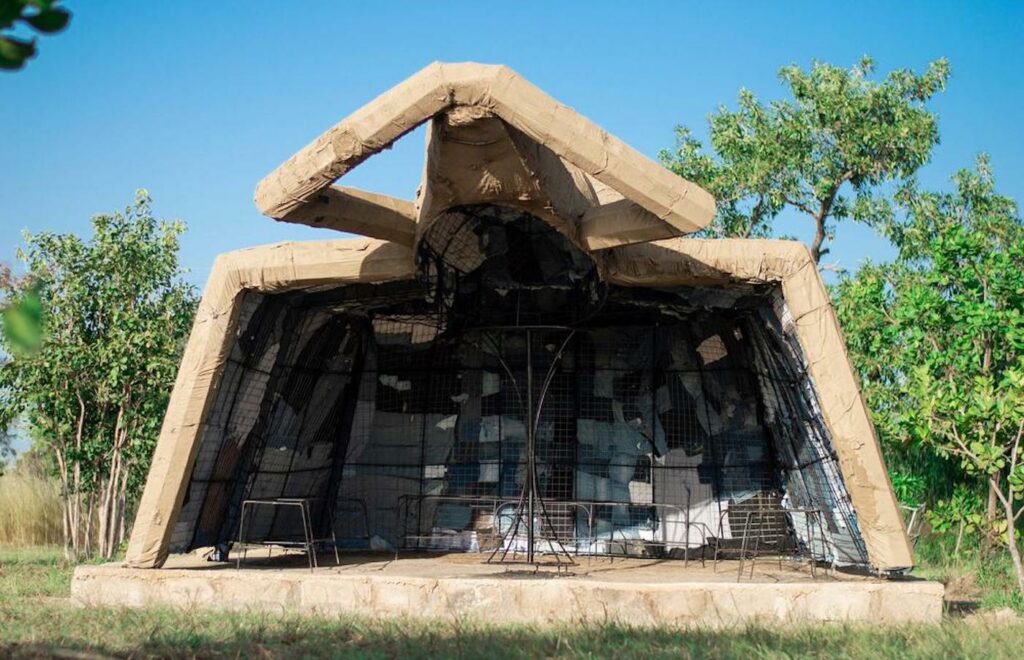Nubuke Foundation, Accra, Ghana
22 Jun 2024 - 11 Sep 2024

Katesi Jacqueline Kalange, Badere Process, 2024. Courtesy of Nubuke Foundation
AFTER LIFE features artists who have previously participated in WOORI, an annual festival in the Upper West region of Ghana hosted by the Nubuke Foundation. The festival showcases indigenous cultures, knowledge and practices on textile weaving.
From catastrophic cyclones to record breaking heat waves, the force of the climate crisis is hitting Africa hard. This is despite Africans being amongst those who contribute the least to the conditions causing the global climate crisis. AFTER LIFE threads together each artists’ response to the unfolding climate crisis through the materials they use and the stories they are telling. Participating Artists: Esther Owusu, Alice Raymond, Fatric Bewong, Gideon Hanyame, Frederick Bamfo, Katesi Jacqueline Kalange, Daboya Community
In a global context riddled with the contradictions of excess and depletion, Fatric Bewong, Gideon Hanyame and Frederick Bamfo’s work focuses on transforming discarded or previously used materials. Bewong recuperates what has been written off as waste. She repurposes it as source material to make art, an act of generating new forms inspired by what she finds in her environment. Hanyame is interested in using a material in multiple ways to unearth the stories that lie dormant within it. Just as he explores the various qualities of a particular material, his work is installed with the intention for you to be able to interact with it in multiple ways as well. Bamfo’s site-specific architectural installations are arenas for community exchange and performance. You are invited to enter and explore a bold collection of structures made from discarded materials. Through the playing of games in the structures, and the subsequent dialogues that follow, he seeks to initiate conversations about how power and identity mediate the interactions between us.
Alice Raymond’s work rings an alarm. The time we have left to address the climate crisis is limited. Her visual codifications of Ghanaian environmental patterns over three decades declare an emergency. Her woven sculptures are a type of map that detail both the resilience of the Polialthia and Neem trees and their vulnerability in the face of human destruction. While the climate emergency is not of African doing, Africa has the solutions. Photographs documenting Katesi Jacqueline Kalange’s installation in Loho of Badere, based on the story as told by the Dagaaba people, sources from an archive of practice and storytelling about living within planetary boundaries.
The work of creating a balanced ecosystem is not just about the environment, it is also about constructing just societies. How we engage the question of labour then is key. Both the woven work by the Daboya community and Esther Ofosu’s use of rattan shavings as her base material is equally about who is behind the work as it is about the art that you see in the gallery. Ofosu’s body of work in this exhibition is a celebration of the people whose labour was needed to transform the materials she uses for her art. The people behind the creation of the art are central and not marginal, a provocation we can, and should, heed in the struggle to address the climate crisis.
AFTER LIFE is about what got us into this crisis – extraction, unbridled consumption and exploitation – and it is also about how we can transform, about where we can go from here.